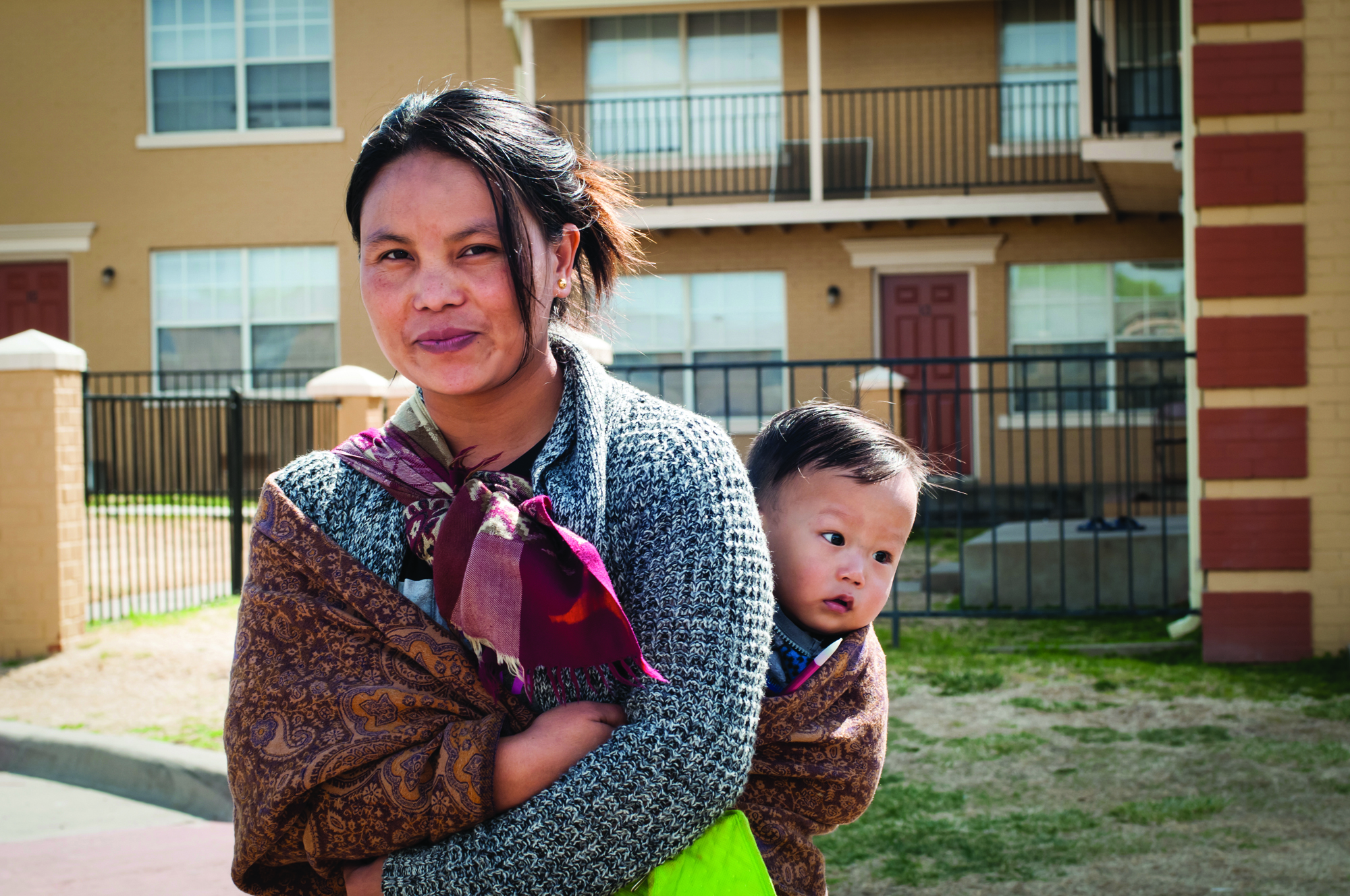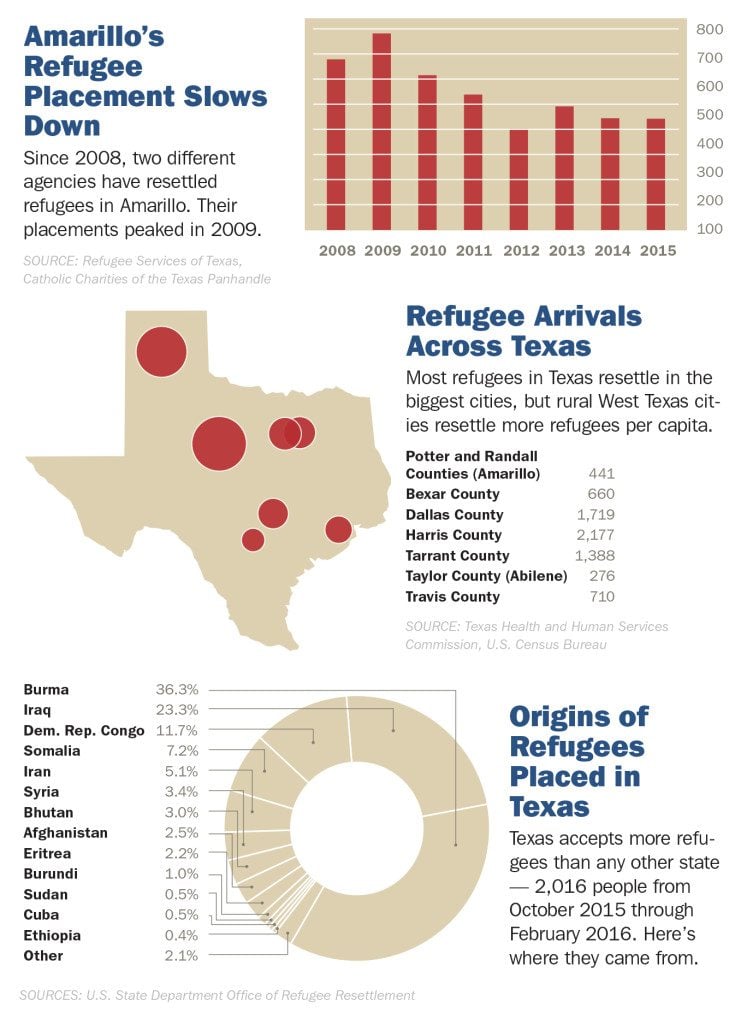
Amarillo Refugees Back in the Spotlight at Capitol

Above: Par Meng and her toddler, Peter Lien, are Burmese refugees who've lived in Amarillo for two years. Now, state leadership wants more input into how refugees are settled across the state.
Amarillo was once again the focus of legislative handwringing over refugees. On Thursday, a Texas Senate committee spent the first half of the day hearing familiar testimony from Amarillo leaders about how the Panhandle city is dealing with a relatively large population of refugees.
Amarillo Mayor Paul Harpole told the Senate Committee on Health and Human Services that refugees put undue strain on the city’s schools, hospitals and police.
“We get more refugees per 100,000 people than any city in the world,” Harpole said. “They want to do good things, there’s just too many… it’s harming our students, it’s harming our people at the hospitals.”
Harpole caused a stir last year when he told Watchdog.org, a conservative outlet, that “small ghettos” were being built in Amarillo for refugees and “that rival tribes — slaves and masters — were being settled together.”
In fact, while Amarillo has the most refugees per capita of any Texas city, it ranks 41st in the nation, according to data from the Refugee Processing Center. Most refugees in Texas settle in the state’s largest cities — such as Houston, Dallas and San Antonio.

Harpole’s claims circulated widely among conservative activists in Texas, fanning the flames of refugee panic even after Harpole went on local TV to say he was misquoted. On Thursday, the mayor complained that the city had little control over the number of refugees resettled in his city. Republican committee chair Charles Schwertner proposed another regulatory layer that would require state licensing of resettlement agencies.
Harpole blamed the federal government for failing to communicate properly with local communities and pressuring private placement agencies to accept refugees regardless of community needs and capabilities.
In recent legislative sessions, Harpole has lobbied the Legislature for greater local control over refugee placements. In 2015, state Senator Kel Seliger, R-Amarillo, passed a bill requiring resettlement agencies to gather input from local leaders before making decisions about where to locate refugees. But Amarillo resettlement leaders claim to have already been doing that.
At Thursday’s hearing, Harpole said that the 41 languages spoken by Amarillo refugees placed an “impossible” burden on teachers. He also said that hospitals and law enforcement were unable to sustain out-of-pocket costs for expensive translation services.
“If we had $1,400 or $1,500 per student and better translation services, we could take care of a lot,” Harpole said, “Also get the good agencies we have [in Amarillo] established in other communities. It’s a matter of dissemination. We could absorb 250 and do a wonderful job, but we get much more than that.”
Other advocates for tighter limits on Amarillo’s refugee population have made a similar appeal, saying that the city is shouldering more than its fair share of the burden without any extra funding. As the Observer reported in early April, the local school district’s grant to support extra bilingual education recently expired. Still, schools like Margaret Wills Elementary, which teach a high concentration of refugee students, have developed programs that help refugee students succeed in regular classes. As Principal Chris Altman described it, the task is not “impossible.”
“Our differences can either be our ruin or a source of strength for us,” Altman told the Observer during a visit in February. “That’s not what all of [the students] hear at home, but here we talk about [how] the amazing thing about our school is you get to go to school with students from all over the world.”


